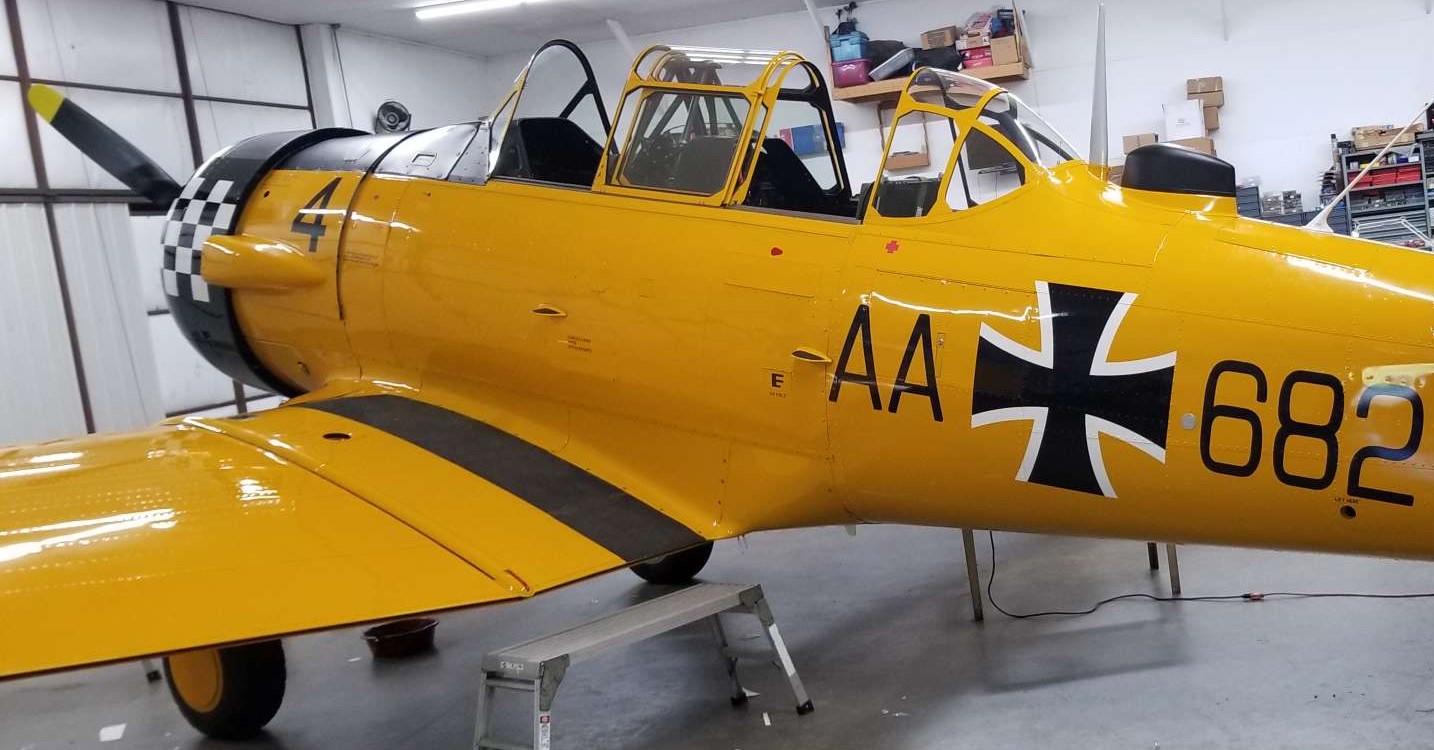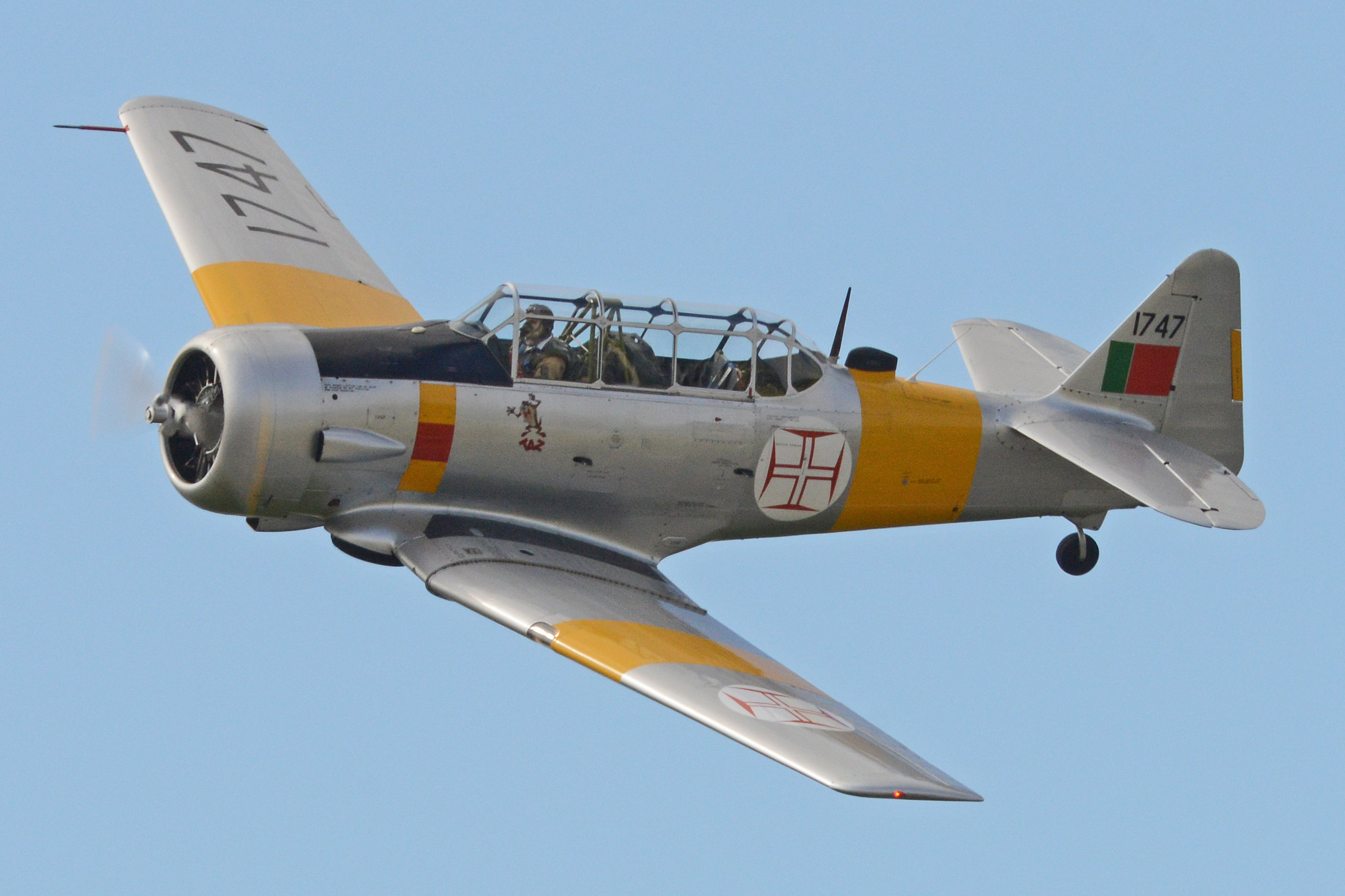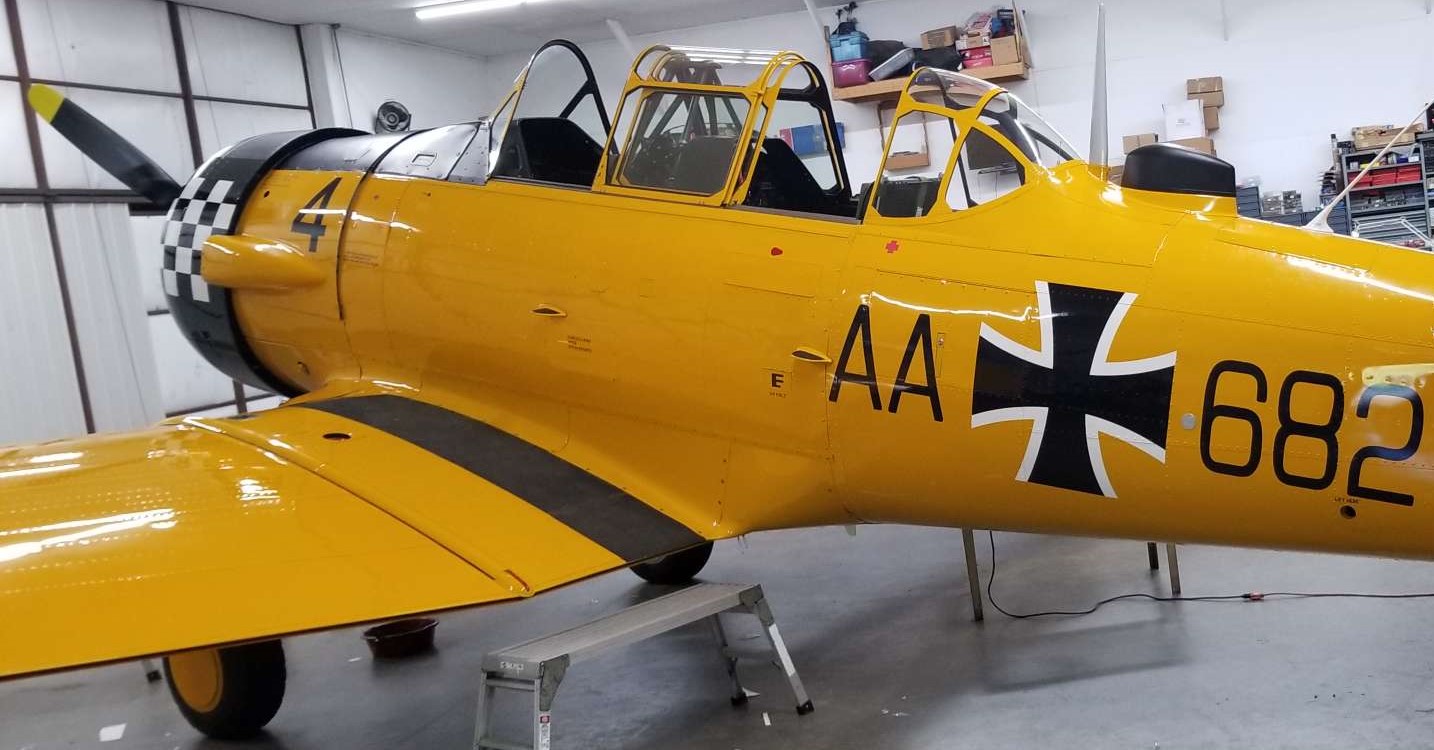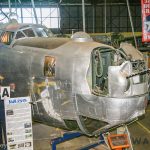PJ Aviation, a provider of aviation brokerage, acquisition, marketing and consulting services, is pleased to announce the availability for purchase of a Canadian-built Harvard Mk.IV. The aircraft has a remarkable service history, and has just completed a complete, ground-up restoration to factory-fresh condition… something rarely afforded a two-seat trainer.
The U.S. Air Force ordered this Harvard, as part of a production batch of 285 examples manufactured by Canadian Car & Foundry (CCF) at their plant in Fort William, Ontario. CCF built these Harvards to U.S. Air Force specifications comparable to the North American T-6G Texan, but designated them as T-6Js for export to NATO countries under the Mutual Assistance Program.
Canadian Car & Foundry completed the aircraft in 1953 with construction number CCF-4-542. Shortly afterwards, US-affiliated production test pilots checked and accepted the Harvard, and assigned her the USAF serial number 53-4623. The newly-formed West German Luftwaffe was the initial operator, taking delivery of the Harvard as AA+682. She trained young German pilots until 1955, whereupon the Germans exported the aircraft along with several other examples to the Portuguese Air Force, where the well-traveled trainer received the serial 1781.
By the 1960s, the Portuguese were vigorously fending off independence movements in their African colonies of Angola and Mozambique, territories they had held for four centuries. A violent insurrection erupted in Mozambique in September, 1964, and Portugal sent some of their Harvards, re-equipped for ground attack and close-air support, as part of a military response. Our subject aircraft was involved in this campaign; a campaign which after a decade of conflict resulted in a ceasefire in September, 1974, and a negotiated Portuguese withdrawal the following year. The Portuguese abandoned ‘542 in Mozambique when they left the newly-minted, independent nation. The combat veteran aircraft eventually went on static display as a war trophy in the capitol city of Maputo. It remained there until the late 1980’s when the South African government purchased it, along with a good number of other ex-Mozambique Air Force T-6s/Harvards to supplement that nation’s fleet, which was then under a military equipment embargo from most western-aligned nations due to South Africa’s apartheid policies then in place.
The South African Air Force did not return the Harvard back to operating condition by the time that they retired their fleet in 1995. They sold the surviving airframes on to civilians, with ‘542 going initially to a new owner in New Zealand. However, the Harvard soon traveled to Australia, where Rob Greinert applied his prodigious skills to the airframe’s renewal at the Historical Aircraft Restoration Society’s facility in Albion Park, New South Wales.
Greinert first drew up a comprehensive restoration plan, which began with the aircraft’s complete disassembly. Each component was inspected, with unserviceable items being repaired, and all life-limited parts replaced with either new old stock or freshly overhauled units. The airframe was restored in a jig to as-new condition, which included re-skinning the wings and fuselage. The engine and propeller were zero-timed before refitting. All of the hoses, cabling and wiring harnesses were replaced. The canopy was rebuilt, with all-new plexiglas, and the cockpits restored to stock condition, albeit with a few additions to comply with modern safety standards.
The aircraft was nearing completion in early 2018, getting as far as her first engine runs. However, the Harvard then underwent another ownership change. She was again taken apart for transport and shipped to PJ Aviation in the USA for reassembly, final restoration and certification. This took place at Two Brothers Aviation in St.Paul, Minnesota.
The aircraft returned to the air for the first time in five decades in July last year, immediately becoming one of the nicest and best restored T-6/Harvards currently flying. She is marked in her original West German Luftwaffe livery, with authentic placarding and stenciling throughout. PJ Aviation completed the flight testing and certification, with the aircraft now on the U.S. civil registry as N542PJ. For someone looking to acquire a pristine, fully-restored, combat veteran T-6/Harvard, it is hard to imagine a better example anywhere in the world. Interested parties should contact Paul Jackson at +1 (612) 963-1655 or [email protected] for more information about this unique offering.


























